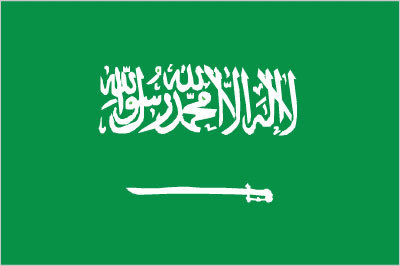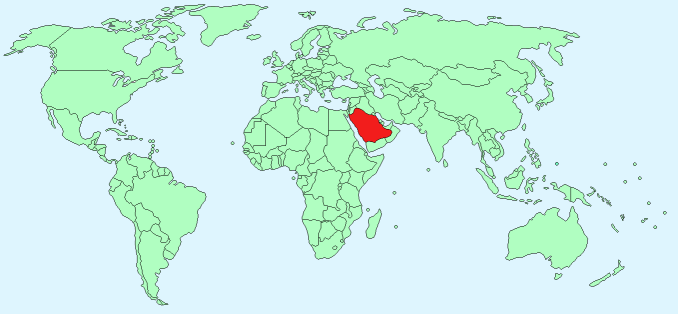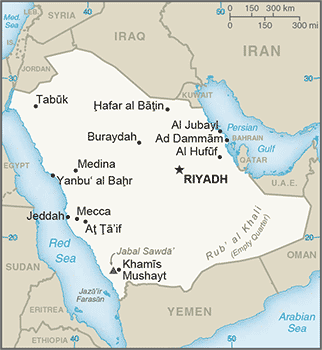Saudi Arabia


Continent – Asia
Region – Western Asia, Middle East
Size – 2,149,690 km²
Geography – sandy desert
Language – Arabic
Religion – Muslim
Monetary Unit – Saudi riyal
Natural Resources – petroleum, natural gas, iron ore, gold, copper
Agriculture – wheat, barley, tomatoes, melons, dates, citrus; mutton, chickens, eggs, milk
Industry – crude oil production, petroleum refining, basic petrochemicals, ammonia, industrial gases, sodium hydroxide (caustic soda), cement, fertilizer, plastics, metals, commercial ship repair, commercial aircraft repair, construction

Neighbouring Countries – Jordan, Iraq, Kuwait, Qatar, United Arab Emirates, Oman, Yeman
Population – 27,752,316 (2015) of which 30% are non-nationals
Population Growth Rate – 1.46%
Average Life Expectancy – 75.21
Capital City – Riyadh (population 6,195,000)
Highest Mountain – Jabal Sawda (3,133 m)
Longest River – No major rivers
Climate – Very hot, dry summers 24°C to 45°C, hot, dry winters 12°C to 25°C. In both summer and winter the temperature drops markedly after sundown.
Yearly Rainfall – 30 cm approx October to March on Western Coast, other regions negligible rainfall
Plant Life – desert shrub, acacia, tussock grass, cacti, date, palm, white broom, convolvulus buschiricus, lavender, echinops, datura, wild rose, achillea biebersteinii
Animal Life – antelopes, bats, baboons, honey badgers, camels, cats, dormice, foxes, gazelles, gerbils, goats, hamsters, hedgehogs, hyenas, jackals, jerboas, leopards, mongooses, porcupines, rats, sheep, shrews, voles, wolves, oryx, lizards, snakes
Bird Life – falcons, doves, ducks, geese, the houbara, kingfishers, martins, owls, pipits, quail, swallows, vultures, warblers, crows, black kite, bustards, eagles, goshawks, linnets, magpies, partridges, thrushes
Harvard Reference for this page:
Heather Y Wheeler. (2015). Saudi Arabia. Available: https://www.naturalhistoryonthenet.com/Facts_Figures/Country_Facts/saudi_arabia.htm. Last accessed Tuesday, July 19, 2016
Facts and Figures Pages
